|
80x5 -
240x3 -
240x4 -
320x1 -
320x2 -
320x3 -
640x1 -
640x2
Set display option above.
Click on
images to enlarge. |
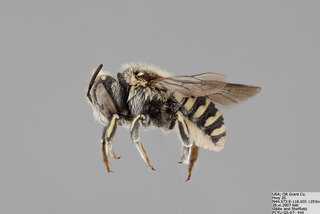
© Copyright Laurence Packer 2014
· 7
Anthidium utahense FEM mm |
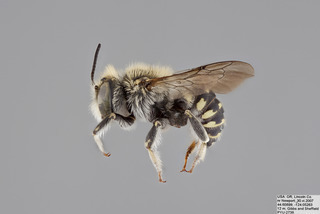
© Copyright Laurence Packer 2014
· 7
Anthidium utahense MALE mm |
|
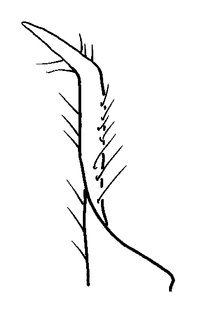
© Kimberly Huntzinger, 2007
· 2
Anthidium utahense, male, S8 apex profile, VG |
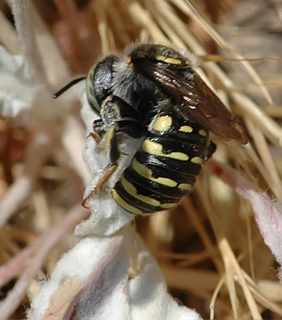
Hartmut Wisch · 1
Anthidium utahense |
|
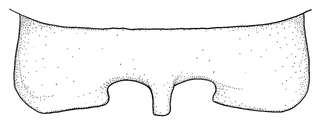
© Kimberly Huntzinger, 2007
· 1
Anthidium utahense, male, T6, VG |
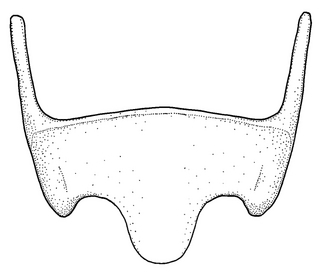
© Kimberly Huntzinger, 2007
· 1
Anthidium utahense, male, S6, VG |
|
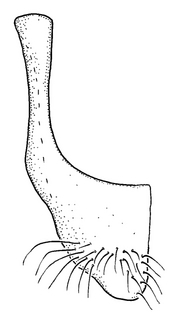
© Kimberly Huntzinger, 2007
· 1
Anthidium utahense, male, S7, VG |
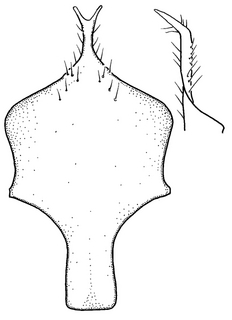
© Kimberly Huntzinger, 2007
· 1
Anthidium utahense, male, S8, VG |
|

© Kimberly Huntzinger, 2007
· 1
Anthidium utahense, female, T6, VG |
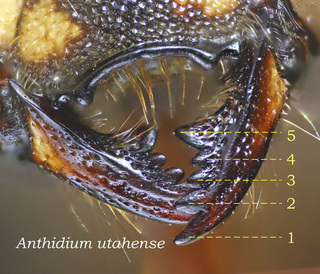
© Copyright source/photographer
· 0
Anthidium utahense, female, mandible, rivers |
|
Identification | |
Extracted from: Grigarick A.A., & Stange L.A., (1968). The Pollen Collecting Bees of the Anthidiini of California (Hymenoptera: Megachilidae) Bulletin of the California Insect Survey Volume 9.
The males of utahense can be distinguished by the shape of tergum VII (fig. 55) which has the lateral lobe truncate posteriorly and about twice as wide as the distance between it and the median spine. The shape of tergum VII is similar for jocosum (fig. 58), but the latter species differs by having weakly produced lateral lobes of sternum VI (figs. 56, 59) and a poorly differentiated setal brush. Females of utahense have a distinctive tergum VI which has the posterior marginal band nearly truncate (fig. 81), and in contrast to mormonum (fig. 80) the dorso-lateral border is close to the cross-under point of the band. The absence of fine white pile on the basitarsus distinguishes utahense from collectum females. Typically, the clypeus and mandible of the females are nearly all yellow, with the clypeus frequently having a dark median band.
This small to moderate-sized species is one of the most commonly collected (696 male, 451 female) and most widespread Anthidium in California, but it is notably absent from the Mojave and Colorado deserts and Great Valley. There is slight geographic variation in color pattern, although specimens from southern California tend to have slightly fuller yellow markings.
According to Jaycox (1966) female utahense nest in the ground by utilizing cavities made by other insects and animals, and will accept artificial nest cavities (such as in straws inserted in wooden blocks) when placed in sandy areas. Pollen was gathered from Phacelia and Melilotus plants. Presumably the same female gathered a load of pollen in 10 to 27 minutes. Completed nests contained 1 to 4 cells (averaging 2.1 cells per nest). The cells were lined with down gathered from Cirsium and Artemisia plants, and the top of the cell series was packed with gravel. Indi- viduals of Dioxys productus productus (Cresson) were observed as parasitoids or depredators of larval food.
Plant visitations taken from California records include species in 25 genera and numerous families. Most frequently visited were species of the legume Lotus.
|
|
|
Names | |
|
|
| Supported by | |
Updated: 2024-07-27 02:16:09 gmt
|